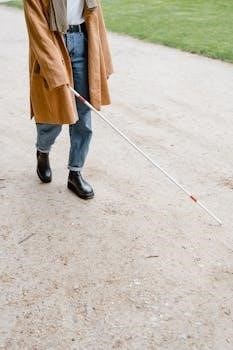Finding the perfect pair of jeans can be a challenge! This comprehensive guide provides size charts, measuring tips, and brand-specific information to help you discover your ideal fit. Stop guessing and start enjoying comfortable, stylish denim that complements your figure.
Understanding Women’s Jeans Sizes

Navigating the world of women’s jeans sizes can feel like deciphering a secret code. Unlike standardized clothing measurements, jeans sizes often vary significantly between brands and even different styles within the same brand. This inconsistency arises from the use of different sizing systems (US, UK, EU) and varying interpretations of what constitutes a particular size.
The US system typically uses a numerical scale, often starting at 0 or 00, while European sizes are generally higher numbers. Understanding that a size 4 in one brand might be a size 6 in another is crucial. Furthermore, the fit of the jeans, such as skinny, bootcut, or straight leg, can also influence the perceived size.
Factors such as the fabric’s stretch and the rise (the distance from the waistband to the crotch) play a vital role in how a pair of jeans will fit. A low-rise jean might require a different size than a high-waisted one, even for the same person. Ultimately, knowing your accurate waist and hip measurements and consulting brand-specific size charts are essential for finding the right fit.
US Standard Size System
The US standard size system for women’s jeans can be perplexing, as it doesn’t directly correlate to standard waist measurements. Typically, it uses a numerical scale, often starting with size 0 or even 00, and increases in even numbers (0, 2, 4, 6, etc.). These sizes are meant to correspond to a range of waist and hip measurements, with each size increment generally adding about an inch.
However, it’s important to note that this system is not uniform across all brands. Vanity sizing, where brands label clothing smaller than the actual measurements, is a common practice. This can lead to confusion and frustration when shoppers find that they wear different sizes depending on the store.
The US system also doesn’t always account for variations in body shape. Some brands cater to specific body types, such as petite or plus-size, while others may have a more general fit. To accurately determine your US jeans size, measure your waist and hips and compare those measurements to the specific size chart provided by the brand you are considering. Remember that the numerical size is merely a guideline, and the true fit depends on the brand’s design and sizing standards.
How to Measure for Jeans⁚ Waist, Hips, and Inseam
Accurate measurements are essential for finding jeans that fit well. To measure your waist, stand naturally and find the smallest part of your torso, usually just above your belly button. Wrap a measuring tape around this area, ensuring it’s parallel to the floor and not too tight or loose. Record the measurement in inches.
Next, measure your hips. Stand with your feet together and find the fullest part of your hips and buttocks. Wrap the measuring tape around this area, keeping it horizontal and snug but not constricting. Note this measurement in inches as well.
Finally, measure your inseam. This is the distance from your crotch to your ankle. You can measure this by standing against a wall and having someone else measure the distance, or by measuring a pair of well-fitting jeans from the crotch seam to the hem. Record the inseam measurement in inches.
These three measurements – waist, hips, and inseam – are crucial for consulting size charts and determining the best jeans size for your body. Remember to measure yourself accurately and compare your measurements to the specific size chart of the brand you’re interested in to find the perfect fit.
Waist Measurement Tips
Measuring your waist accurately is key to finding well-fitting jeans. For the most precise measurement, stand in a relaxed posture and breathe normally. Avoid sucking in your stomach or holding your breath, as this can lead to an inaccurate reading.
Locate the natural waistline, which is typically the narrowest part of your torso, usually just above your belly button. Wrap a flexible measuring tape around your waist at this point, ensuring the tape is parallel to the floor and snug, but not too tight. The tape should lie flat against your skin without digging in;
It’s best to wear thin clothing or measure directly against your skin for the most accurate result. If you’re wearing bulky clothing, the measurement may be larger than your actual waist size.
Double-check your measurement to ensure accuracy. If you’re unsure, it’s always a good idea to have someone else measure your waist for you. With a precise waist measurement, you’ll be better equipped to consult size charts and find jeans that fit comfortably and flatter your figure.
Hip Measurement Tips
Accurately measuring your hips is crucial for finding jeans that fit well through the seat and thighs. Stand with your feet together and wear thin clothing, or measure directly against your skin, for the most accurate measurement.

Locate the fullest part of your hips. This is typically across the widest point of your buttocks. Ensure the measuring tape is parallel to the floor as you wrap it around your hips. The tape should be snug but not so tight that it compresses your skin.
It’s helpful to look in a mirror to ensure the tape is level all the way around. If the tape dips down in the back, the measurement will be inaccurate.
If you’re having trouble measuring your hips yourself, ask a friend or family member to help. They can ensure the tape is positioned correctly and that you’re standing with your feet together.
Record your hip measurement in inches or centimeters, depending on the size chart you’ll be using. With an accurate hip measurement, you can confidently select jeans that provide a comfortable and flattering fit.
Inseam Measurement Tips
The inseam is the length from the crotch seam to the bottom of the leg opening and determines where your jeans will fall on your leg. Accurate inseam measurement is crucial for ensuring your jeans are the right length, whether you prefer them to graze the top of your shoes or pool slightly at the ankle.
The easiest way to measure your inseam is to have someone else measure for you. Stand up straight with your shoes on. Have your helper measure from your crotch down to the top of your shoe.
If you are measuring yourself, take a pair of well-fitting pants and measure along the inside seam, from the crotch to the hem. This method works best with jeans similar to the style you are purchasing.
Consider the type of shoes you’ll wear most often with your jeans. If you plan to wear heels, you’ll need a longer inseam. For flats, a shorter inseam is ideal.
Remember that inseam lengths can vary slightly between brands. Always check the specific product details or size chart for the most accurate information.
Women’s Jeans Size Charts (US, UK, EU)
Navigating women’s jeans sizes across different regions can be confusing. This section provides comprehensive size charts for the US, UK, and EU sizing systems, allowing you to easily find your corresponding size regardless of where you are shopping. Note that these are general guides and slight variations may occur between brands.
The US system typically uses numerical sizes (0, 2, 4, 6, etc.), while the UK system often adds 2 to the US size (e.g., US 4 is a UK 6). The EU system uses a different set of numbers altogether (32, 34, 36, etc.).
Refer to the charts below to cross-reference your waist and hip measurements with the appropriate size in each system. Remember to always double-check the brand’s specific size chart for the most accurate fit. These charts are an excellent starting point for online shopping and can help minimize the risk of ordering the wrong size.
Converting Between Different Sizing Systems

Jeans sizing can be perplexing, especially when dealing with international brands. This section explains how to convert between US, UK, and European sizing systems, ensuring you select the correct size no matter where you shop. Keep in mind that these conversions are approximate, and individual brands may vary.
Generally, to convert from US to UK sizes, add 2 to your US size. For example, a US size 6 is typically a UK size 8. Converting to European sizes is less straightforward, but there are charts available that map US sizes to their corresponding EU sizes. Understanding these conversions is crucial for online shopping, especially when a brand uses only one sizing system.
Always consult a brand’s specific size chart when possible, as vanity sizing and different fits can affect the accuracy of these general conversions. Use these guidelines as a starting point, but prioritize the brand’s measurements for the best possible fit.
Tall Women’s Jeans Size Guide
Finding jeans that are long enough can be a constant struggle for tall women. This guide focuses on finding the right inseam length for a flattering and comfortable fit. Tall sizes typically start with an inseam of 34 inches, but some brands offer even longer options.
To determine your ideal inseam, measure from your crotch down to your ankle while wearing shoes. This measurement will help you identify jeans that won’t be too short. Many brands specializing in tall sizes provide detailed size charts that include inseam measurements, making it easier to find the perfect fit. Look for brands that specifically design for tall frames, as they often adjust the rise and proportions for a more balanced look.
Don’t settle for jeans that are too short – invest in a pair that fits properly and enhances your silhouette. With the right inseam, you can finally enjoy jeans that are both stylish and comfortable.
Petite Women’s Jeans Size Guide
Petite women often face the challenge of finding jeans that fit properly in length, rise, and overall proportions. This guide is designed to help petite women find jeans that flatter their figure and provide a comfortable fit. Petite sizes are typically designed for women 5’4″ and under, with adjustments made to the inseam, rise, and overall length.
When shopping for petite jeans, pay close attention to the inseam measurement. Petite inseams typically range from 28 to 30 inches. Also, consider the rise of the jeans, as a lower rise can help elongate the legs. Look for brands that specifically cater to petite sizes, as they often make adjustments to the proportions of the jeans to ensure a better fit.
Avoid jeans that are too long or baggy, as they can overwhelm a petite frame. Instead, opt for slim or straight-leg styles that create a streamlined silhouette. With the right fit, petite women can find jeans that are both stylish and flattering.
Plus Size Jeans Guide
Finding the perfect pair of plus-size jeans can be a game-changer for comfort and confidence. This guide focuses on helping plus-size women navigate the world of denim and discover jeans that flatter their curves and provide a comfortable, stylish fit.
When shopping for plus-size jeans, it’s crucial to prioritize fit and fabric. Look for jeans made with stretchy, comfortable denim that allows for movement and doesn’t constrict. A higher rise can provide more coverage and support, while a well-placed waistband can prevent gapping.

Consider different cuts and styles to find what works best for your body shape. Bootcut and wide-leg jeans can balance out wider hips, while straight-leg jeans offer a classic, versatile look. Avoid overly tight or restrictive jeans, as they can be uncomfortable and unflattering.
Pay attention to the size chart provided by the brand, as sizing can vary. Don’t be afraid to try on different sizes and styles to find the perfect fit. With the right pair of plus-size jeans, you can feel confident and stylish all day long.
Finding Your Perfect Fit⁚ Rise and Cut Considerations
Beyond waist and hip measurements, the rise and cut of jeans play a significant role in achieving a flattering and comfortable fit. Understanding these elements is crucial for finding jeans that complement your body shape and personal style.
Rise⁚ The rise refers to the distance from the crotch seam to the top of the waistband. Common rises include high-rise (above the natural waist), mid-rise (at the natural waist), and low-rise (below the natural waist). High-rise jeans can elongate the legs and provide tummy control, while low-rise jeans create a more relaxed and casual look. Mid-rise jeans offer a balance between the two.
Cut⁚ The cut refers to the shape and silhouette of the jeans from the hip down. Popular cuts include skinny, straight, bootcut, and wide-leg. Skinny jeans are form-fitting throughout the leg, while straight-leg jeans offer a more relaxed fit. Bootcut jeans flare slightly from the knee down, and wide-leg jeans are wider throughout the leg.
Consider your body shape and personal preferences when choosing the rise and cut of your jeans. Experiment with different styles to find what makes you feel confident and comfortable.
Brands’ Individual Size Charts
While standard size charts provide a general guideline, it’s crucial to remember that sizing can vary significantly between different brands. Factors like fabric composition, design, and target customer base can all influence how a particular brand’s jeans fit.
Many brands offer their own detailed size charts, often including measurements for waist, hips, inseam, and sometimes even thigh circumference. These charts are typically found on the brand’s website or product pages. Always consult the specific size chart for the brand you’re considering before making a purchase.
Some brands may also provide fit guides or customer reviews that offer insights into how their jeans tend to run (e.g., true to size, runs small, runs large). Pay attention to these details to get a better sense of which size is likely to be the best fit for you. If you’re unsure, consider ordering two sizes and returning the one that doesn’t fit as well. Remember that finding the perfect fit often requires a little experimentation!

